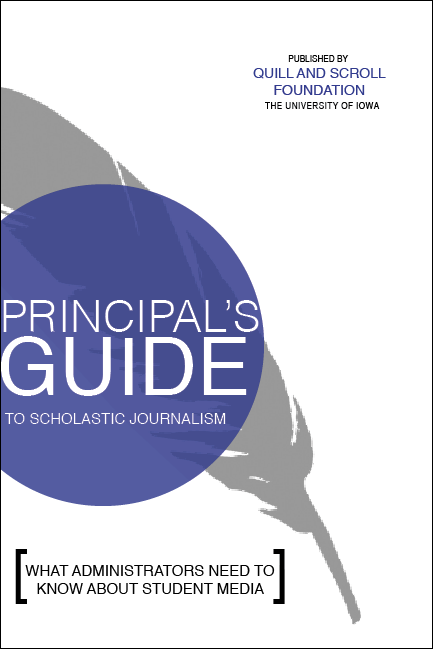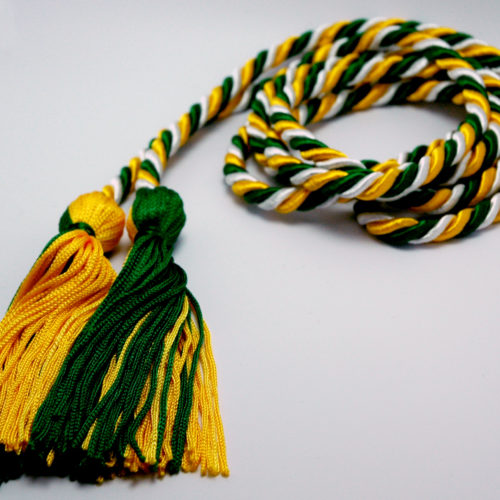Description
What adminstrators need to know about student media
“I want my journalism students to have the best educational experience.”
A new high school principal stated this intent in a telephone conversation within months on the job. It left an indelible impression.
He was resourceful. His commitment to his students and members of the community led him to reach out to Quill and Scroll International Honorary Society for High School Journalists to identify ways to provide that excellent educational experience. As this remarkable telephone conversation continued, he explained he had been a journalism student at the same school, and at that time years ago the program was consistently among the best in the nation.
That legacy had continued, but with turnover of teachers and principals, the program had slipped. The current journalism teacher was well-qualified and was rebuilding; the potential for regaining performance levels was there. What could help the students and teacher do their best? With respect to Quill and Scroll’s top rating in its prestigious News Media Evaluation, he wondered, “How can the newspaper staff once again attain Gallup Award status?”
At a time when education is under intense public scrutiny and demands for accountability, school administrators seek better ways to educate students and to enhance teacher performance. Administrators seek approaches to directives such as Common Core State Standards and 21st-century readiness skills, while also juggling demands of parents, faculty and other community members. What’s more, they have budgets to balance. The conversation shared earlier reflects one high school principal’s intent to ensure the excellence of only one of many valuable programs at his school; he’s not alone in that mission.
With these administrative realities in mind, our endeavor with this book is to provide a helpful resource for principals of all types as well as for superintendents and school board members. In this third revision of the Principal’s Guide to Scholastic Journalism, originally published in 1966, we also take into account the digital age and the challenges it brings. At the same time, we include some of the same journalism and education standards that remain sound practice.
The Principal’s Guide will help administrators collaborate with students, parents, teachers and other community members as they engage in this journalistic endeavor. New school administrators will find the guide useful for developing, maintaining and supporting the aims of journalism programs as well as for appreciating their value.
Today’s school administrators deal with social and online media ethics, student Internet use, sensitive topics and school safety. This guide addresses these issues and more. Our contributing writers also provide an overview of how student media achieve contemporary outcomes of Common Core State Standards, teach 21st-century skills, prepare savvy media consumers and create informed global citizens. Student media exercise First Amendment rights and participate in our democracy
The Principal’s Guide to Scholastic Journalism is an essential tool for high school principals and other administrators who play a crucial role in the success of scholastic media programs. The latest revisions offer a comprehensive look at how administrators can support exemplary scholastic journalism.
John Bowen, assistant director of the Center for Scholastic Journalism at Kent State University and a former Dow Jones News Fund National High School Journalism Teacher of the Year, served as editor and chairs the JEA Scholastic Press Rights Commission. He invited writers for this guide
Contributors are:
• Jane Blystone, Ph.D., MJE* –– JEA Region 7 director and chair of graduate studies in secondary education at Mercyhurst University
• Candace Perkins Bowen, MJE –– CSJ Director and a former Dow Jones News Fund Journalism Teacher of the Year
• Megan Fromm, Ph.D. — former journalist and scholastic media adviser
• Mark Goodman, J.D., Knight Chair in Scholastic Journalism at Kent State University
• H.L. Hall, MJE — former DJNF Journalism Teacher of the Year and Journalism Education Association Yearbook Adviser of the Year
• Marina Hendricks, CJE* —former director of communications at the Newspaper Association of America and current doctoral student in journalism at the University of Missouri
• Lori Keekley, MJE — newspaper and online news adviser at St. Louis Park (Minn.) High School
• Sarah Nichols, MJE — JEA vice president and former JEA Yearbook Adviser of the Year
• Randy Swikle, MJE –– former DJNF Journalism Teacher of the Year
* MJE = Master Journalism Educator; CJE = Certified Journalism Educator
We acknowledge the generous support of the American Society of News Editors (see ASNE’s message) and its Youth Journalism Initiative for underwriting the cost of printing the Principal’s Guide, and of JEA in making it possible for the writers to meet at Kent State University, which graciously opened its doors to us. As with previous versions, this is a collaborative effort among those who believe in the value of scholastic journalism education. We also acknowledge Sue Zake, Assistant Professor of Journalism at Kent State University for her talent and time in helping to make the website version a working reality.
Laurence R. Campbell, Ph.D., a renowned researcher who wrote a number of journalism books and articles, wrote the original version of the Principal’s Guide. A former dean of the Florida State University School of Journalism, he also was head of Quill and Scroll Newspaper Critical Service and director of the Quill and Scroll Foundation research program. Former Quill and Scroll trustee Mary Benedict updated the guide in 1971 and was a member of a revision committee in 2001.
For principals, including the new high school principal addressed earlier, the Principal’s Guide provides convenient, expert answers for administrators to best educate students using scholastic journalism.



